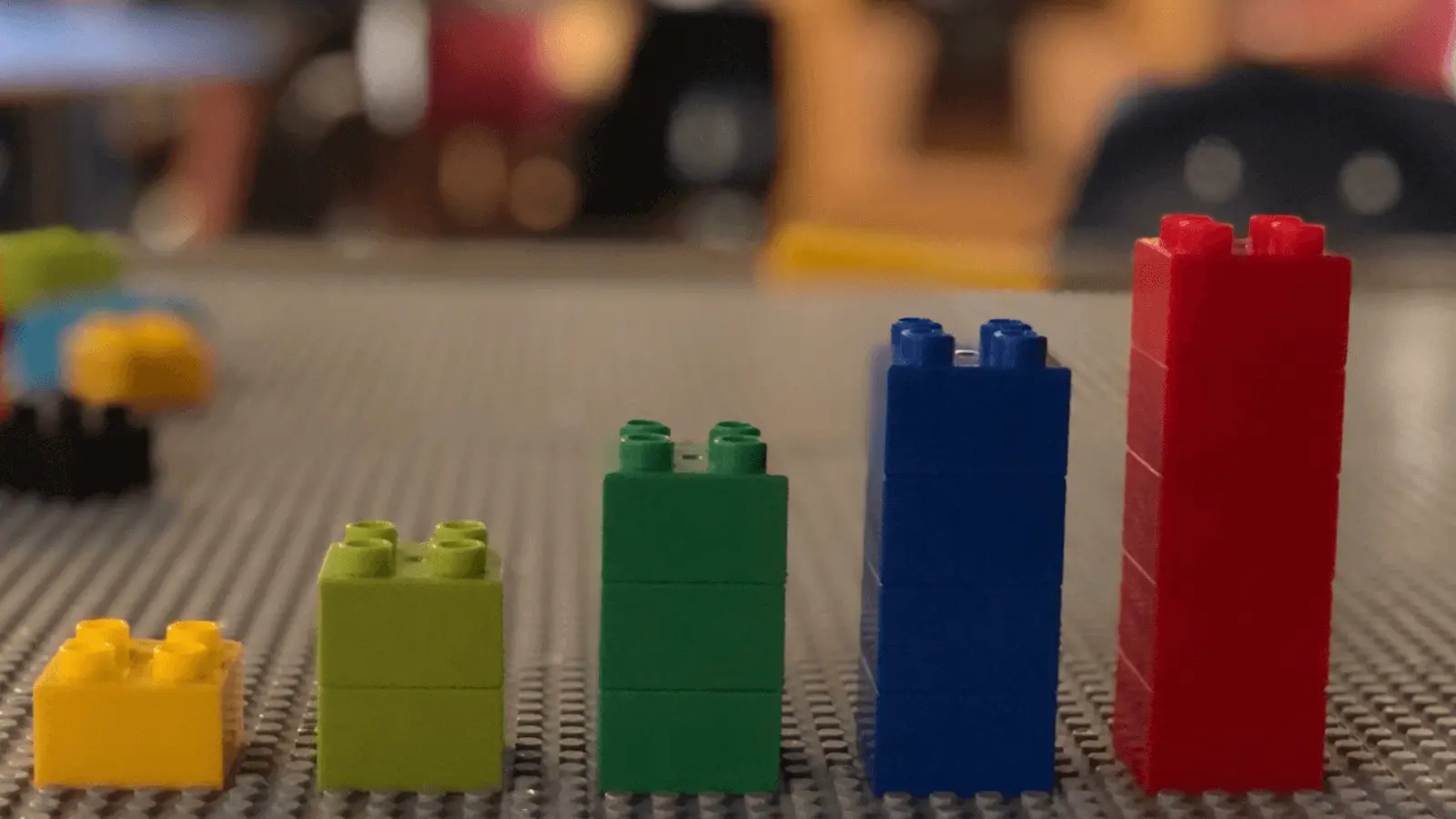Most startups fail because founders haven’t adequately tested their theories. In other words, they’ve failed to answer the question, "Is what I'm doing going to attract enough customers?"
An MVP, or minimum viable product, is designed to prevent this.
MVPs are important for startups because they can help avoid building products nobody wants. MVPs are a way of testing early versions of ideas with target users and early customers who are highly motivated to solve their problems by using a product like yours. This saves time and money because you can find out early on if you’re building the right product.
The goal is to test an idea or mobile or web app without spending a lot of money building a full-featured product. When startups develop an MVP, they focus on releasing a product to market as soon as possible with minimal features and functionality. The company then gathers user feedback to find out how customers use the product. They then make changes based on their feedback and start the process again.
In this article, we will discuss why MVPs are important for startups, how they work and some common mistakes that people make when implementing them.
What is an MVP?
An MVP is a product with the basic features and functionality needed to test a hypothesis about a product or service.
What is the MVP approach?
The MVP approach is an important part of the Lean Startup methodology.
According to Eric Ries, who developed the Lean Startup model, when building a product for customers, startup founders should actively work to maximise validated learning about customers with the least effort.
Validated learning means using customer data to prove or disprove one's business hypotheses to make decisions about the next steps for a business.
This is achieved by creating an MVP and putting it in front of customers, then using analytics tools to track metrics like downloads, sign-ups, page views and usage.
MVP features
An MVP can be anything from a rough prototype to a landing page.
The key with an MVP is to get something in front of users quickly and learn what they think about it. The best MVPs don't look like the final product. Instead, they expose customers to a small part of the experience and allow them to interact with it.
Examples of MVPs
Airbnb founders Brian Cheung and Joe Gebbia started their company because they needed extra cash to pay their rent. They tested their hypothesis that guests would pay to sleep on air mattresses in their apartment. They ended up hosting three guests during a design conference that was happening in San Francisco. This successful MVP led to a multibillion-dollar business that has entirely disrupted the hospitality industry.
Uber is another example of a successful MVP. Uber co-founders Travis Kalanick and Garrett Camp couldn’t get a cab one night. They decided to develop technology that could make it possible for people to hire private drivers from their phones. But they didn't start with anything like the product they have today. Their prototype simply connected users to available limo drivers.
Another example is Slack, which was created in 2009 by Stewart Butterfield while he and his team were building an online game called Glitch. Their MVP involved sending group messages to people on their phones using SMS technology without having to pay for each message. This MVP proved successful and they discontinued the game to focus on their new messaging product which they called Slack.
MVP mistakes to avoid
Many entrepreneurs make the mistake of focusing too much on how customers will use their product instead of what they're learning about it. This is an example of something called solution-driven design. It's the opposite of what you should do with an MVP. The solution-driven design doesn't require founders to think about their customers or put themselves in their shoes.
Another common mistake people make with MVPs is taking too long to build them. This wastes time since it delays getting crucial customer feedback. It's better to build a product that fails fast rather than a complex one that doesn't work at all.
You should also avoid investing too much time and money in MVP development – speed to market is of the essence, without breaking the bank. For example, you might want to hire your own team of designers, developers and project managers to create an MVP for your business idea. But this could end up being a very expensive way to learn if people want your product or not.
Instead, you should engage with a reputable digital product studio and, together, create the simplest possible solution that validates your hypothesis and start testing it with customers as soon as you can. In other words, focus on what you can do to get something into the hands of users and learn from them instead of trying to concoct a perfect solution.
Why build an MVP?
The main goal of an MVP is to get something into the hands of customers and see what they think. This gives you valuable data that can be used to make informed product decisions like whether or not your startup should pursue this idea at all.
An MVP also allows founders to start a conversation with their users early on in the development process.
What are the benefits of an MVP?
When it comes to startups, there are a lot of unknowns. This is especially true in the early stages of a company when founders are trying to determine whether their idea is something people want and whether or not it’s feasible. MVPs can help reduce some of this uncertainty by allowing startups to test their hypotheses with real users.
MVPs are important because they allow you to:
- Validate your ideas with actual customers
- Eliminate wasted time and money building something nobody wants
- Focus on what’s important – building a product that solves a real problem
- Get feedback from customers that can help you improve the product
- Increase the chances of your product succeeding in the market
A successful MVP should be able to help you learn something that can be used to make a better and more stable version of the product.
An MVP can be tangible or intangible. For example, Dropbox started with an MVP that consisted of a video demonstrating how the product would work.
An MVP can also involve pre-selling a product or gauging interest with paid advertising. In this situation, a startup wouldn't build the solution until you know that people are prepared to pay for it.
There are lots of different ways to approach MVPs, but sticking to these criteria will help you get something that can help guide future development decisions while still making progress towards launching a finished product.
Situations where MVPs are beneficial
You should build an MVP when you're:
- Not sure how customers will interact with the product or whether or not the idea is feasible
- Unsure if people will pay for your solution and want to test the market before building it
- Worried about wasting money on a product nobody wants

How to plan an MVP
What is the best way to plan an MVP concept?
You should start by writing a list of all the assumptions you have about their product. Your goal in this step is to simply put everything that comes to mind on paper because it can be easy to overlook things in the early stages.
Next, review the list and determine which of these assumptions can be tested with an MVP. Start by writing down two to three objectives that you want the MVP to achieve and what the MVP would look like for each one.
Once you have your list, write down all the data points that you'll need to collect for each objective. Depending on what you're trying to learn, you'll need data such as:
- How many people visited your site and how long they stayed
- What percentage of your customers return in future
- The number of hours users spend using the product and where they got stuck
- The features they use most often and which ones they don't
Your MVP plan should also include the metrics you'll be using to measure success. If you're unsure, ask yourself what would need to happen for your business to validate customer interest?
The next steps are to:
Ensure your research is accurate
When it comes to MVPs, accurate research is key. This means that you need to make sure you have a solid understanding of not only your target market but also the problem you’re trying to solve. You also need to know what features and functionality your MVP should have to test your hypotheses.
Design within your budget
Designing within your budget is another important factor to consider when creating an MVP. It’s important to be realistic about what you can afford and what isn’t necessary for the first version of your product. Remember – this isn’t the perfect, polished final end product.
Work in sprints and with the development team
Working in sprints with the development team is another way to ensure that your MVP is executed efficiently and effectively. Sprints are short periods (usually 2-4 weeks) where you and the team will work as quickly as possible to complete the MVP.
What is the difference between an MVP and a prototype?
A prototype can show how something will look or work, but it doesn't do anything. An MVP, on the other hand, needs to be developed enough that people can interact with it. This distinction is especially important when it comes to building a business case. Founders should be able to use an MVP as a way of showing potential investors that users are interacting with their product and learning from the experience.
How much does an MVP cost?
There’s no one answer for this question because there are so many different factors at play. Your MVP might be free or cost thousands of pounds. The important thing is that it helps mitigate risks by stopping you wasting money on developing and launching a fully-fledged product that nobody wants.

How to build an MVP
Once you have your research and plan for the MVP in place, it's time to get down to business. Start by writing a list of everything you need to do to create the minimum viable product.
Next, review this list and determine which items can be outsourced and which ones must be built internally. This is where having a team with the right skills is crucial. Things you might need to pay for include:
- Web development and design
- Backend services like servers and storage
- Analytics and marketing tools
The best way to start this process is by organising your MVP into two or three high-level buckets based on priority. Then, prioritise each item in the bucket and track how much time and money they're estimated to take.
Make sure you and your team are on the same page by assigning each item a status of “in progress,” “awaiting review” or “complete." This will help make sure nothing falls through the cracks. It will also hold everyone accountable for completing the tasks on time.
Using a simple Kanban Board tool like Trello will help you visualise and keep track of the project by keeping priorities, deadlines and accountabilities visible for the MVP team.
It’s crucial to show the value of your MVP by putting a monetary value on it. This is called “monetising,” and will help you estimate how much revenue your product could generate if fully developed and brought to market.
Validate your MVP with a group of early adopters. This is one of the best ways to get feedback about your feature set, including user experience and product design.
Be sure to reach out to these people ahead of time so that they can sign up for your email list or beta product launch. You’ll want them around long enough to give you valuable feedback throughout the process.
To test your business hypothesis, you will need to focus on:
Choosing your tech stack
This is the foundation for your MVP and it's based on your unique skillsets. If you don’t have a lot of experience with building web apps, you might want to start with something like WordPress or Squarespace. Those platforms have built-in monetisation options (like e-commerce). A tech-agnostic digital product studio will help you choose the right platform.
Testing your hypothesis
Once your MVP is in place, it’s time to test your product. Invite a small handful of early adopters to use it and collect user feedback.
Adhering to agile principles
Agile is a project management methodology that, amongst other benefits, reduces the friction involved in getting feedback from early adopters due to its cycle of constant collaboration and iterative improvement.
Deadlines and sprints
By setting deadlines and having sprint meetings, you’ll hold yourself and the team accountable for following through with your MVP. Deadlines are typically set based on product milestones that must be completed to launch an MVP. And while this can vary from business to business, some common milestones include Beta launch, Open-beta launch, Private beta launch and launch to the public.
Communication as a development team
Communication is the key to success when developing an MVP. The more open and honest your team can be, the better chance you have of reaching each milestone on time. This is true for both purely internal teams and teams that include external expert partners. Best practices for communication during development include: asking questions early and often about project details, allowing questions to flow freely within teams (and not just from the top-down), removing barriers to communication (like closed-door meetings) and making sure everyone on the team has a clear understanding of roles and responsibilities.
The MVP development process
MVP development is a collaborative process between designers, developers and the rest of the product team.
The product development process involves:
- The design and development phase
- User flow and user interface
- Integrating feedback and implementing changes based on what you’ve learned
Designers will need to consider a variety of elements related to the user experience. This includes how users flow from screen to screen, what information is displayed on each screen and how they can make any necessary edits or changes.
The design team will also need to create the product’s branding and visual identity, including logos and typefaces, colours and any custom graphics. Ideally, they’ll eventually produce a design system unique to your product that will ensure a consistently exceptional customer experience as it evolves.
Developers will need to make sure they code all of the necessary functionalities into the MVP, such as:
- How users will interact with the product daily
- Any integrations that are required, such as social media or payment processor
- Any APIs that need to be developed for backend functions
Once the design and development phases are complete, you’ll need to bring your MVP together with an easy-to-use interface. When testing it with potential customers, they shouldn’t have any trouble understanding how it works.
You’ll also need to make sure all of the components are well-documented so that your team can easily maintain it once you hand it off. Building an MVP doesn’t happen overnight, but the time spent in development is worth it when you have a fully functional prototype that can be tested with real users.
What to avoid when creating an MVP
Here are some common mistakes that companies make when designing an MVP:
- Creating an MVP that’s too big
- Focusing on what you want to build rather than what your customers need
- Building something without first talking with potential customers about their problems and needs
- Forgetting to do market and competitor research before building an MVP
- Not having a plan to test the success of your product
- Not paying enough attention to user satisfaction
- Not understanding market demand
Summary
Ultimately, building an MVP is all about keeping your eye on the prize. The most important thing you can do during development is maintain focus on your initial goal. It’s easy to get distracted along the way, but if you can stay focused on that one goal (and iterate as needed) then you’ll have a product that has the potential for market success.
Have you spotted a gap in the market? Or are you wondering if your business idea has legs and need an external expert point of view? Get in touch with us today for a chat with one of our subject matter experts.




